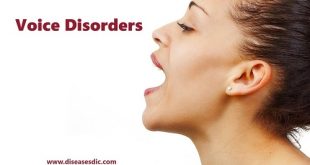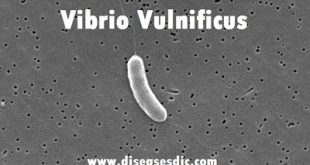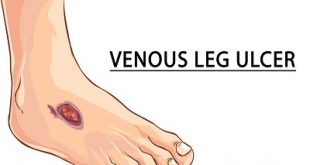Definition
Varicose veins are rope-like veins that typically form on the legs. These veins are usually the result of a weak vein valve that is allowing blood to collect in the vein. It can very noticeable due to their blue or purple color and their bulging from the skin. There are several factors that can contribute to one’s risk of developing spider veins. Genetics can play a factor in whether or not you will develop varicose veins in your lifetime. Being pregnant can sometimes cause it because of the hormonal changes and the pressure put on the veins. Varicose veins are increasingly common as you age and being overweight also increases the risk of developing them. In order to prevent varicose veins, it is also important not to sit or stand for long periods at a time.
Epidemiology
- Prevalence estimates vary based on population, selection criteria, disease definition, and imaging techniques. Generally, prevalence rates are higher in industrialized countries and in more developed regions.
- Prevalence of visible varicose veins in the Western population over 15 years of age is 10% to 15% for men and 20% to 25% in women. Prevalence rates in the US are 15% (range from 7% to 40%) in men and 27.7% (25% to 32%) in women. Visible varicose veins are more prevalent in Hispanic people (26.3%) and less prevalent in Asian people (18.7%).
- The prevalence of varicose veins increases with age. In one study, 40-year-olds had a prevalence of 22%, 50-year-olds a prevalence of 35%, and 60-year-olds a prevalence of 41%.
- A genetic link has been suggested. The risk of varicose veins developing if both parents are affected is 90%; 62% risk if 1 parent is affected and female offspring; 25% risk if 1 parent is affected and male offspring; and if no parent is affected, the risk is 20%.
Types
Greater saphenous varicose veins
Lower extremities veins consist of deep veins and superficial veins and most of the blood flow in legs goes back to the heart through deep veins. It is formed in superficial veins that cover about 10% of the blood flow in legs. Among the superficial veins in legs, the one that forms varicose veins most frequently is greater saphenous veins. The greater saphenous vein is the superficial vein that goes up from inside of the ankle and is connected to the femoral vein at the inguinal region. It is formed on the main duct and the main branches of the greater saphenous vein is greater saphenous varicose veins. The area of the outset of varicose vein is lower legs, inside of the thigh, outside of lower extremities and the back of the thigh.
Lesser saphenous varicose veins
The lesser saphenous varicose vein is often seen next to the greater saphenous varicose vein. Lesser saphenous vein runs up from the outside of Achilles tendon and is connected to the deep vein at the back of the knees. The area of the outset of the lesser saphenous varicose vein is at the back of ankle or knees.
Branch type varicose vein
It is an enlarged segmental vein that is ramified from the main saphenous vein. Mainly it is seen below knees and sometimes solitary. Its feature is slightly narrower than a saphenous varicose vein.
Genital area varicose vein
It occurs due to the blood that backflows from the vein around the ovary and womb. Accordingly, the condition worsens when the flow of the blood into the ovary and womb increases during the menstrual period. When bumpy blood vessel meanders diagonally from the groin at the back of femur and spreads through lower extremity, genital area varicose vein is suspected.
Reticular type and Web type (spider veins) varicose vein
The reticular type is the swollen fine subcutaneous veins in the size of 2-3mm in diameter that spread like a mesh. The web type varicose vein is dilated capillary veins that are finer than reticular type in the size of less than 1mm in diameter that exist just below the skin. Web type varicose veins are not bumpy like saphenous varicose veins.
Risk factors
These factors increase your risk of developing:
Hormonal Changes: Women are more likely to develop the condition. Hormonal changes during pregnancy, pre-menstruation or menopause may be a factor because female hormones tend to relax vein walls. Taking hormone replacement therapy or birth control pills may increase your risk of varicose veins.
Family history: If other family members had varicose veins, there’s a greater chance you will too.
Being overweight puts added pressure on your veins.
Standing or sitting for long periods of time: Your blood doesn’t flow as well if you’re in the same position for long periods.
Causes of varicose veins
In normal veins, valves in the vein keep blood moving forward toward the heart. With varicose veins, the valves do not function properly, allowing blood to remain in the vein. Pooling of blood in a vein causes it to enlarge.
This process usually occurs in the veins of the legs, although it may occur elsewhere. It is common, affecting mostly women.
Causes include:
- Defective valves from birth (congenitally defective valves)
- Superficial Venous Thrombophlebitis
- Trauma
- Standing for a long time
Having increased pressure in the abdomen may make you more likely to develop varicose veins, or may make the condition worse. This may be caused by:
- Pregnancy
- Obesity
Primary varicose veins occur because of congenitally defective valves, or without a known cause. Secondary varicose veins occur because of another condition, such as when a pregnant woman develops it.
Symptoms
It occur close to the surface of the skin and anywhere throughout the leg. Symptoms typically include:
- A feeling of fullness, heaviness, aching, and tiredness in the legs, especially at the end of the day or after periods of prolonged standing.
- Visible, enlarged veins.
- Swelling of the feet and ankles (due to stagnant blood leaking through the walls of the veins into surrounding tissues).
- Changes in skin color.
- Frequent itching of the skin.
- In more severe cases, the development of non-healing skin ulcers.
Symptoms of varicose vein
Complications of varicose veins
Complications although rare, can include:
Ulcers: Extremely painful ulcers may form on the skin near varicose veins, particularly near the ankles. Ulcers are caused by long-term fluid buildup in these tissues, caused by increased pressure of blood within affected veins. A discolored spot on the skin usually begins before an ulcer forms. See your doctor immediately if you suspect you’ve developed an ulcer.
Blood clots: Occasionally, veins deep within the legs become enlarged. In such cases, the affected leg may swell considerably. Any sudden leg swelling warrants urgent medical attention because it may indicate a blood clot — a condition known medically as thrombophlebitis.
Bleeding: Occasionally, veins very close to the skin may burst. This usually causes only minor bleeding. But, any bleeding warrants medical attention because there’s a high risk it can happen again.
Diagnosis and test
A physical examination, mainly visual, by a doctor will decide whether or not a patient has varicose veins. The patient will be asked to stand while the doctor checks for signs of swelling.
The following diagnostic tests are sometimes ordered:
Doppler test: An ultrasound scan to check the direction of blood flow in the veins. This test also checks for blood clots or obstructions in the veins.
Color duplex ultrasound scan: This provides color images of the structure of veins, which helps the doctor identify any abnormalities. It can also measure the speed of blood flow.
The patient may also be asked questions about the symptoms. In some cases, a doctor might refer the patient to a vascular specialist.
Treatment of varicose veins
If treatment is necessary, your doctor may first recommend up to 6 months of using compression stockings, taking regular exercise and elevating the affected area when resting.
If it is still causing you pain or discomfort, or they cause complications, they can be treated in several ways.
The most common treatment options include:
- Endothermal ablation – where heat is used to seal affected veins
- Sclerotherapy – this uses a special foam to close the veins
- Ligation and stripping – the affected veins are surgically removed
If you do feel you require treatment, it might help if you print out treatment options for varicose veins to discuss with your GP.
Prevention of varicose veins
There’s no way to completely prevent varicose veins. But improving your circulation and muscle tone can reduce your risk of developing it or getting additional ones. The same measures you can take to treat the discomfort from varicose veins at home can help prevent it, including:
- Exercising
- Watching your weight
- Eating a high-fiber, low-salt diet
- Avoiding high heels and tight hosiery
- Elevating your legs
- Changing your sitting or standing position regularly
 Diseases Treatments Dictionary This is complete solution to read all diseases treatments Which covers Prevention, Causes, Symptoms, Medical Terms, Drugs, Prescription, Natural Remedies with cures and Treatments. Most of the common diseases were listed in names, split with categories.
Diseases Treatments Dictionary This is complete solution to read all diseases treatments Which covers Prevention, Causes, Symptoms, Medical Terms, Drugs, Prescription, Natural Remedies with cures and Treatments. Most of the common diseases were listed in names, split with categories.








what can I do to remove it vein on my leg please
Please consult a doctor.
Although it is common among the women ,the awareness is not encouraging or zero. I want to implore the respective health personals to reach the women both the urban and the rural folks to curb this problem.
satisfactory information
Researches can be added along with drug interaction and contra indications.
when I was 28. years old I had vericose vain in my leg I told my doctor at government hospital clinic doctor she gave me injections it all dissapperd now I iam 45 years old thanks for the treatment gave me sir lankan doctor s who treat me get we’ll
I was having varicocele varicose vain in the left scrotum then operated in 1993 can it cause erectiledysfuncion
if the treatment is properly obtained then no problem exists. Anyhow consult a doctor to get out from the confusion.
try homeopathic medicine really it works those with varicose vein
Where will one find such doctor in Nigeria
please how will I get the treatment?
please look into the post for treatment.
my varicose veins just started, but I don’t have the opportunity to do exercise due to my work, pls what else can I do?
Please consult a doctor.
If the varicose veins problem has once been detected in doppler test because of faulty valves, can the problem still go off by itself.
No one should take treatment for the varicose veins.
where is treatment with medicine?
It can be treated only with the surgery and few home remedies and diet.
I have vericose vein in both legs my doctor told me to do elevation for six weeks but now the problem is continuing please what should I do
Elevation alone do not cure the problem please consult a specialist to get a proper treatment.
can they be remove or was the treatment for vertical vains? one’s you have them because of long standing position.
To get rid of pain treatment is needed.
I’m suffering from varicose veins
Please consult a doctor.
I have done all of those ways to prevent it but problem stell proceeding what can do ?
Please consult a doctor.
is laptropic surgery to remove the vericose vein.Is it required
Endoscopic vein surgery. You might need this operation only in an advanced case involving leg ulcers if other techniques fail. Your surgeon uses a thin video camera inserted in your leg to visualize and close varicose veins and then removes the veins through small incisions. This procedure is performed on an outpatient basis.
what can I eat and use to be free of it
Eat more foods with fiber. Have oranges, ginger, and amla regularly and avoid white flour, white rice, and sugar.
Simply replace white flour with whole wheat flour. The whole wheat flour contains all the vitamins, minerals, proteins and fiber that are naturally present in the grain.
White rice can be replaced with brown rice and wild rice. Brown rice facilitates many health improvements, including lower blood pressure and lower risk of diabetes.
Instead of eating a sugary snack, eat a fruit. The boost of antioxidants will reinforce your veins and the extra fiber will help you lose weight by keeping you full longer.
The best foods for varicose veins are those that contains Rutin. Rutin is a flavonoid which reduces the fragility and permeability of capillaries, therefore reducing your risk of developing new varicose veins. Natural sources of Rutin are Apples, Cherries, Blackberries, Grapes, Apricot etc
Drink a lot of water to keep yourself hydrated and it will prevent blood clots which ultimately lead to varicose veins.
I believe that my mother has varicose veins. She told me that she may have developed it over sitting for long periods of time due to her work as a secretary when she was young. Thanks for telling me that compression stockings may help alleviate her pain, but I’ll still try to find treatment options from a good clinic in case it gets worse for her.
My aunt has varicose veins and she wants to have it treated because to be able to wear skirts again. It was explained here that there are different types of varicose veins like a branch and reticular type varicose veins. Furthermore, it’s recommended to go to trusted medical professionals when in need of quality vein treatment.
my mom is suffering from this..and she has wore stoking and have a surgery…. but still no big change
Please consult a doctor to get rid of this problem.
I have vericos veins on my right leg and looks swollen. can this scerotherapy special foam mentioned work. what is the simpler name of it.
Sclerotherapy is a procedure used to treat blood vessels or blood vessel malformations (vascular malformations) and also those of the lymphatic system. A medicine is injected into the vessels, which makes them shrink.
please I have varicose veins and how can I cure for it
Please consult a doctor to get a cure from varicose veins.
I have varicose veins and how can I cure for it please help me
Your doctor may recommend up to 6 months of using compression stockings, taking regular exercise and elevating the affected area when resting.
I never knew that having visible, enlarged veins is a sign that I have varicose veins. In my opinion, I think that I should get surgery for this since it’s giving me discomfort whenever I’m in the cold. It might be a good idea to consult an expert regarding this since I need to make sure that this will be gone as soon as possible.
I m suffering from similar types of symptoms since 2016 seen in Left Leg just above Ankle. Applied 11 days IV Treatment with regular Dressed healed after six months approximately.Itching started in Rt Leg after few months in the evening session. Small Red Spots or rashes seen, finally wound occurred. I took Oral as well as ointment for 6-8 months Allopathic as well as Ayurveda medicines. It was worked and healed wound.Around 1yr passed same Rt Leg having dark skin, wound too. Left Leg also??
As per the doctor’s statements varicose vein is a vascular disease not only affect one leg but both the legs. So it is better to get diagnosed with a doctor if your fear of occurring the other leg.
I have operated x8 varicose veins but still I suffering by varicose veins.
it is a lifetime disease. required to be under medication life long. but please consult a doctor
is there any drugs or cream to reduce the appearance
To reduce the appearance of varicose veins, several options exist. Compression stockings can improve blood flow, while topical creams may provide temporary relief. Procedures such as sclerotherapy and laser therapy aim to diminish the appearance of veins. For severe cases, surgical interventions like vein stripping or endovenous ablation may be considered. Consultation with a healthcare professional is crucial to determine the most effective and personalized treatment for your specific condition.